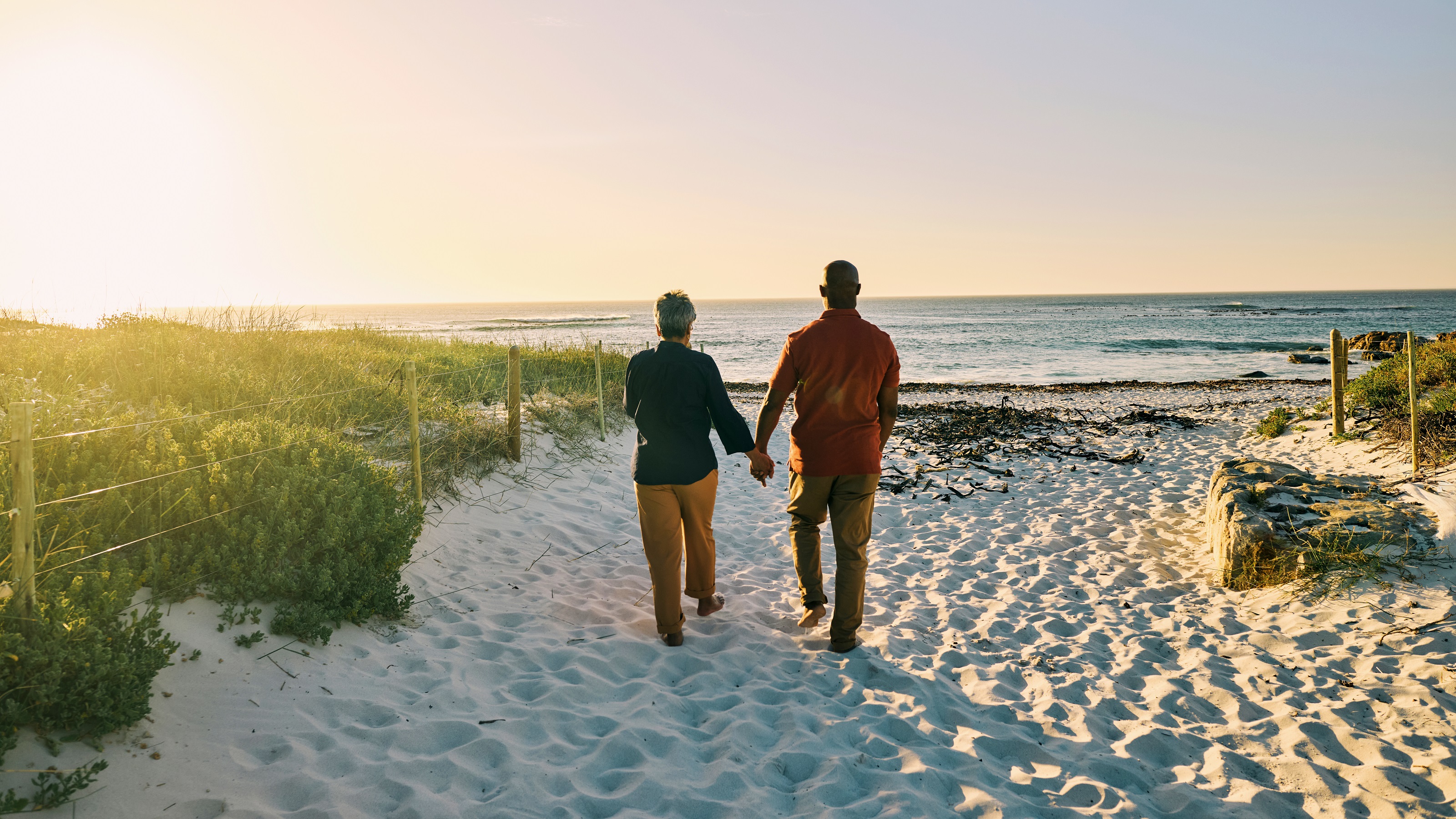A Better Way to Tell a Correction from a Bear Market?
You could go by the usual definition, but dive a little deeper into the market and you might get a better indication of what's going on before making any stock moves.


The standard definition of a correction is a 10% market decline, while a bear market is a 20% decline. These are simple definitions … I take a different view.
At Cornerstone, we view a correction as a significant decline within an up trend. The key here is that the up trend continues after the correction is over. Two examples are the crash in 1987 and the correction of 1990. In both cases, the market fell 20% or more, yet they recovered quickly and the up trend continued.
As you can see in the chart below, the up trend (green lines) continued upward, but the market, (blue line) vacillated between the two green up trend lines. Since the declines did not reverse the trend, they were only corrections, however, since they were declines of over 20%, by the standard definition, they were called bear markets.

Sign up for Kiplinger’s Free E-Newsletters
Profit and prosper with the best of expert advice on investing, taxes, retirement, personal finance and more - straight to your e-mail.
Profit and prosper with the best of expert advice - straight to your e-mail.

Why is that significant? Buying the dip has been a successful strategy for investors over the past nine years. Corrections can be a buying opportunity, since the market is still in an up trend. Current positions do not need to be sold, again since the market is still in an up trend.
At Cornerstone, we define a bear market as the reversal of an up trend. This can be seen in 2000 and 2007. A reversal of an up trend is usually characterized by a chart with lower lows and lower highs. Since the lows keep going lower, the chart reverses trend, and an up trend starts to head down (red lines).

For investors, what that means is with a bear market, rallies are to be sold, and dips are not bought. As you can see from the chart, buying the dips only leads to lower lows. Selling rallies is the wise move in a bear market.
Once a chart breaks above the down trend and the lows start getting higher and the highs start getting higher, the bear market is over and the market has reversed into a bull market.
Why do markets peak, and how far can a bear market go? Overvaluation makes markets fragile. So the more overvalued, the more vulnerable it is to a correction or a bear market. Historically, bear markets (as defined by Cornerstone) did not bottom until valuations were extremely low. The price-to-earnings ratio of the market has hit single digits in the past at bear market bottoms. Today’s Shiller P/E is over 30.
How can you tell if a correction is on its way to becoming a bear market? You don’t know until the chart tells you. If after a decline, the market fails to return to its up trend, that is a sign that a bear market has begun.
Where are we today? As you can see in the chart below, the market has not made lower lows, which means the first step in a bear market hasn’t happened yet. So, for now, the market is in a correction.

The green lines indicate the long-term up trend. The thin orange line indicates what some call the “Trump rally.” This refers to the market’s rise since President Trump was elected. On the Dow Jones, this Trump rally trend could be broken, and the market could drop a bit further, but it still has a ways to go before it even falls to the level of the top green line that marks the upper limits of the up trend. As long as it holds that trend line, and follows it up, the market would not have fallen into a bear.

The S&P chart above is a little different. The upper end of the up trend channel and the Trump rally are hitting the same spot right now. So a failure of one means the failure of the other. As you can see by the chart, the S&P is currently slightly below each trend line.
Does this mean it’s the start of a bear market? Not yet. The first indicator would be if the low fell below the previous low from the 1st quarter of 2018. And then the subsequent rally would have to fail to make new highs, at least above the upper trendline. Then time will tell.
Watching if the lows go lower and the highs go lower are good signs the market is rolling into a bear. And especially if the market drops below the lower green up trend line.
In the meantime, it’s only a correction within an up trend, and should be treated as such, by holding onto quality investments and adding investments that have become oversold. Will it turn into a bear market? Only time will tell, so we are watching things closely and have strategies — such as selling into rallies, reducing equity exposure, and raising cash among others — for various outcomes.
Third-party posts do not reflect the views of Cantella & Co Inc. or Cornerstone Investment Services, LLC. Any links to third-party sites are believed to be reliable but have not been independently reviewed by Cantella & Co. Inc. or Cornerstone Investment Services, LLC. Securities offered through Cantella & Co., Inc., Member FINRA/SIPC. Advisory Services offered through Cornerstone Investment Services, LLC's RIA.
Get Kiplinger Today newsletter — free
Profit and prosper with the best of Kiplinger's advice on investing, taxes, retirement, personal finance and much more. Delivered daily. Enter your email in the box and click Sign Me Up.

In 1999, John Riley established Cornerstone Investment Services to offer investors an alternative to Wall Street. He is unique among financial advisers for having passed the Series 86 and 87 exams to become a registered Research Analyst. Since breaking free of the crowd, John has been able to manage clients' money in a way that prepares them for the trends he sees in the markets and the surprises Wall Street misses.
-
 Stock Market Today: Have We Seen the Bottom for Stocks?
Stock Market Today: Have We Seen the Bottom for Stocks?Solid first-quarter earnings suggest fundamentals remain solid, and recent price action is encouraging too.
By David Dittman
-
 Is the GOP Secretly Planning to Raise Taxes on the Rich?
Is the GOP Secretly Planning to Raise Taxes on the Rich?Tax Reform As high-stakes tax reform talks resume on Capitol Hill, questions are swirling about what Republicans and President Trump will do.
By Kelley R. Taylor
-
 Social Security Is Taxable, But There Are Workarounds
Social Security Is Taxable, But There Are WorkaroundsIf you're strategic about your retirement account withdrawals, you can potentially minimize the taxes you'll pay on your Social Security benefits.
By Todd Talbot, CFP®, NSSA, CTS™
-
 Serious Medical Diagnosis? Four Financial Steps to Take
Serious Medical Diagnosis? Four Financial Steps to TakeA serious medical diagnosis calls for updates of your financial, health care and estate plans as well as open conversations with those who'll fulfill your wishes.
By Thomas C. West, CLU®, ChFC®, AIF®
-
 To Stay on Track for Retirement, Consider Doing This
To Stay on Track for Retirement, Consider Doing ThisWriting down your retirement and income plan in an investment policy statement can help you resist letting a bear market upend your retirement.
By Matt Green, Investment Adviser Representative
-
 How to Make Changing Interest Rates Work for Your Retirement
How to Make Changing Interest Rates Work for Your RetirementHigher (or lower) rates can be painful in some ways and helpful in others. The key is being prepared to take advantage of the situation.
By Phil Cooper
-
 Within Five Years of Retirement? Five Things to Do Now
Within Five Years of Retirement? Five Things to Do NowIf you're retiring in the next five years, your to-do list should contain some financial planning and, according to current retirees, a few life goals, too.
By Evan T. Beach, CFP®, AWMA®
-
 The Home Stretch: Seven Essential Steps for Pre-Retirees
The Home Stretch: Seven Essential Steps for Pre-RetireesThe decade before retirement is the home stretch in the race to quit work — but there are crucial financial decisions to make before you reach the finish line.
By Mike Dullaghan, AIF®
-
 Three Options for Retirees With Concentrated Stock Positions
Three Options for Retirees With Concentrated Stock PositionsIf a significant chunk of your portfolio is tied up in a single stock, you'll need to make sure it won't disrupt your retirement and legacy goals. Here's how.
By Evan T. Beach, CFP®, AWMA®
-
 Four Reasons It May Be Time to Shop for New Insurance
Four Reasons It May Be Time to Shop for New InsuranceYou may be unhappy with your insurance for any number of reasons, so once you've decided to shop, what is appropriate (or inappropriate) timing?
By Karl Susman, CPCU, LUTCF, CIC, CSFP, CFS, CPIA, AAI-M, PLCS